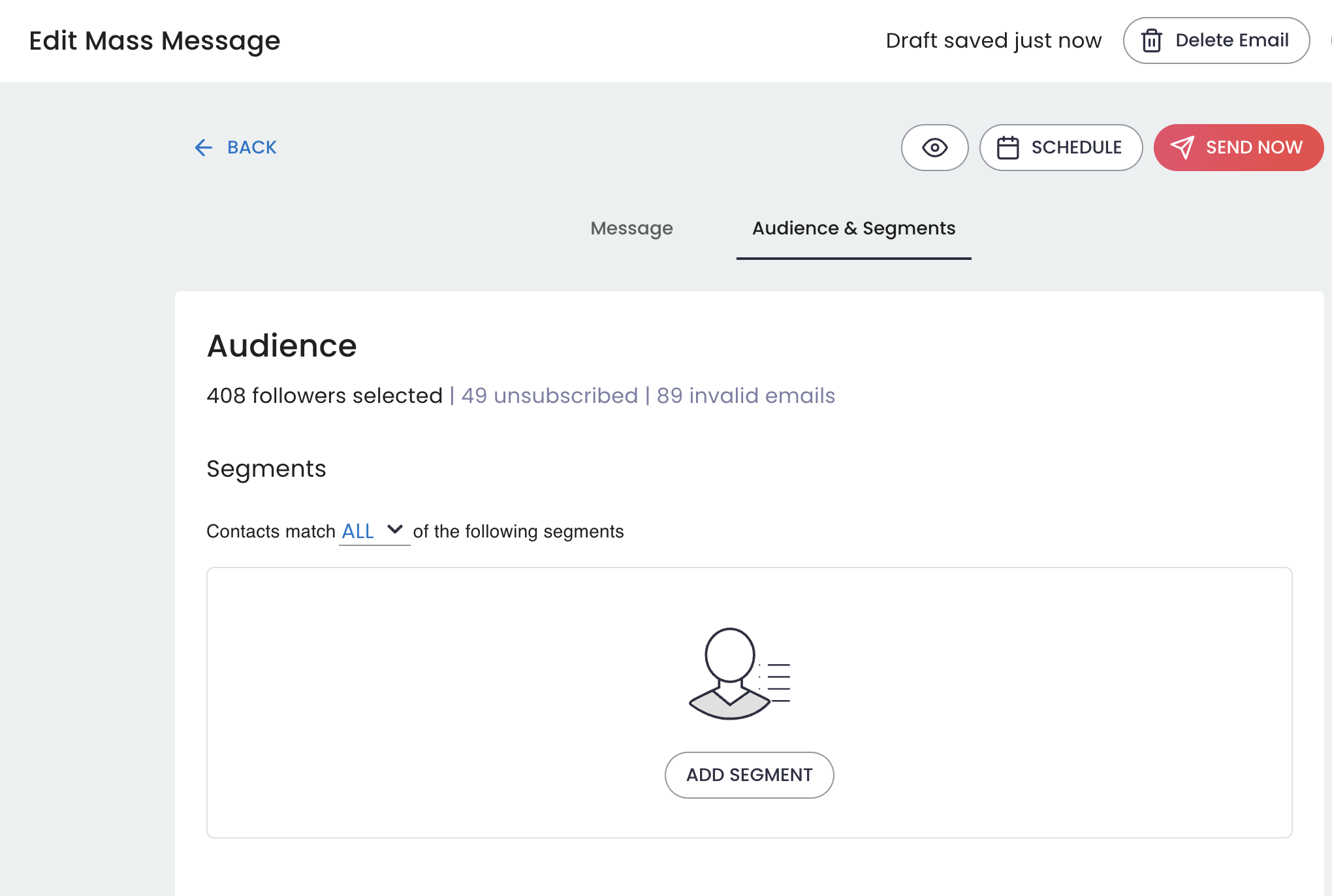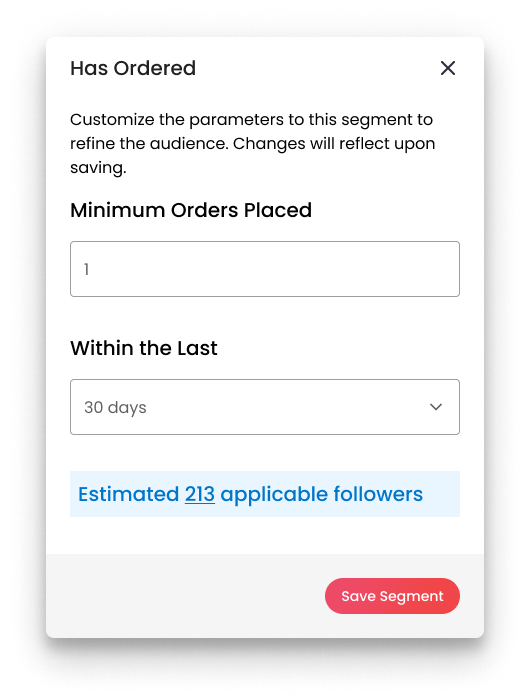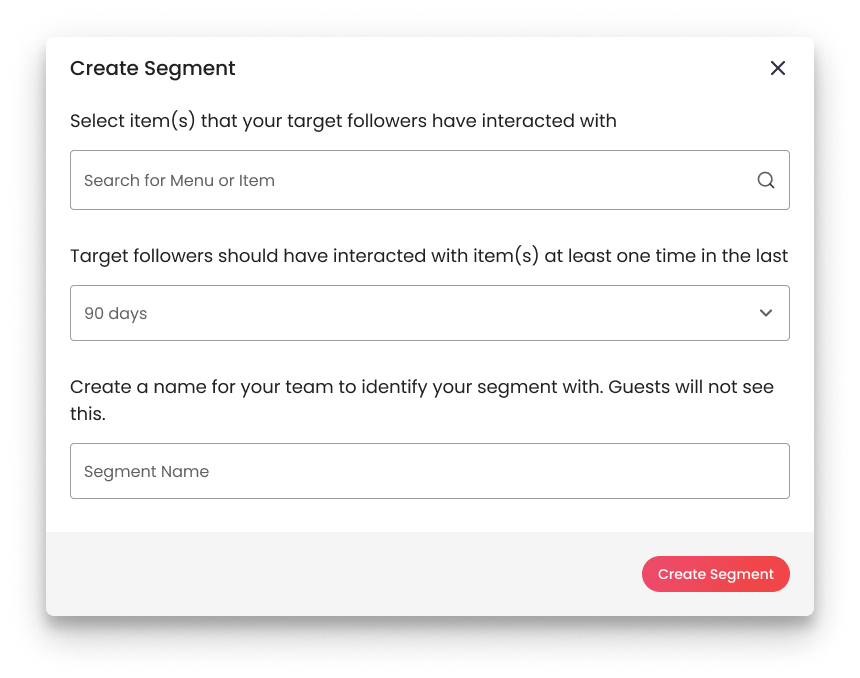TLDR; Allowing restaurant users of any skill set reach the right audience when marketing to their followers.
Our audience filter tool was buried in marketing, but adoption was low. Clients told us it was confusing, hidden, and not useful. At the same time, enterprise clients were asking us directly for segmentation features like Mailchimp or Constant Contact, which were tools they already trusted. For them, segmentation was not just nice to have. It was critical for retention and ongoing ROI.
The challenge was clear:
Enterprise teams needed advanced, flexible segmentation.
Mom-and-pop shops wanted something simple and quick.
And we needed to deliver an MVP that balanced both ends of that spectrum.

Working with my PM and the data team, we narrowed the scope to 9 predefined segments, each with editable parameters.
For example:
Top Spender → $100 in the last 90 days (editable threshold + timeframe)
Has Ordered → last order date (editable range)
Most Engaged / Least Engaged → based on click and open rates
This approach gave mom-and-pop owners ready-to-use segments, while giving power users the ability to fine-tune.

I designed segment detail views that focused on the data point that mattered most (spend, last order date, etc.).
From there, owners could:
- Apply filters within the segment
- Bulk-select customers
- Send directly to a new campaign
This connected segmentation to campaign creation in a way that felt natural. To make the system more transparent, I also added estimated follower counts that updated as parameters changed. This way, users had immediate feedback before committing to a send.


After releasing the MVP, we revisited client feedback and added dish segmentation as a quality-of-life improvement. Owners could now select a menu item and target followers who had interacted with it. This could mean the user had ordered it, reviewed it, or even just added it to their cart.
This bridged a gap between menu data (already central to Popmenu) and marketing tools, giving restaurants a highly relevant way to reach customers with the right promotions at the right time.


The biggest technical hurdle was performance. With large follower counts, queries could lag.
I worked closely with engineers to:
- Define what “timely” results meant for different client sizes
- Explore ways to optimize query structures
- Decide when to show estimated counts vs. finalized counts
By aligning design expectations with technical realities, we avoided over-promising to clients and made sure the UI set clear expectations.

Our first step was identifying the key categories of information that would provide a clear picture of performance. These eventually became:
- Website
- Marketing
- Online Ordering
From there, we collaborated closely with our data team to define what data points were available, what they meant, and why they mattered. We evaluated each candidate for its relevance, actionability, and alignment with our goals.
By focusing on an MVP with 9 predefined, editable segments, we struck a balance between power and simplicity.
Enterprise teams got a familiar, flexible system.
Smaller restaurants had ready-to-use segments without setup overhead.
The feature now provides a clearer, more valuable path than the old filters, directly addressing a highly requested need tied to enterprise retention.

With the MVP live, our next focus is custom segment building, especially around menu items. Many restaurants want to target followers based on what they’ve ordered (or haven’t ordered) to drive repeat visits and promote high-margin dishes.
We’re also expanding on re-marketing directly within communications. Instead of segments living as a separate step, owners will be able to create or refine segments while building a campaign, making the flow more seamless and actionable.
Together, these updates will deepen relevance for followers, while giving restaurants stronger tools to drive revenue through tailored outreach.
We're also building on communication history, so users can see all the campaigns that have been sent to certain segments.
